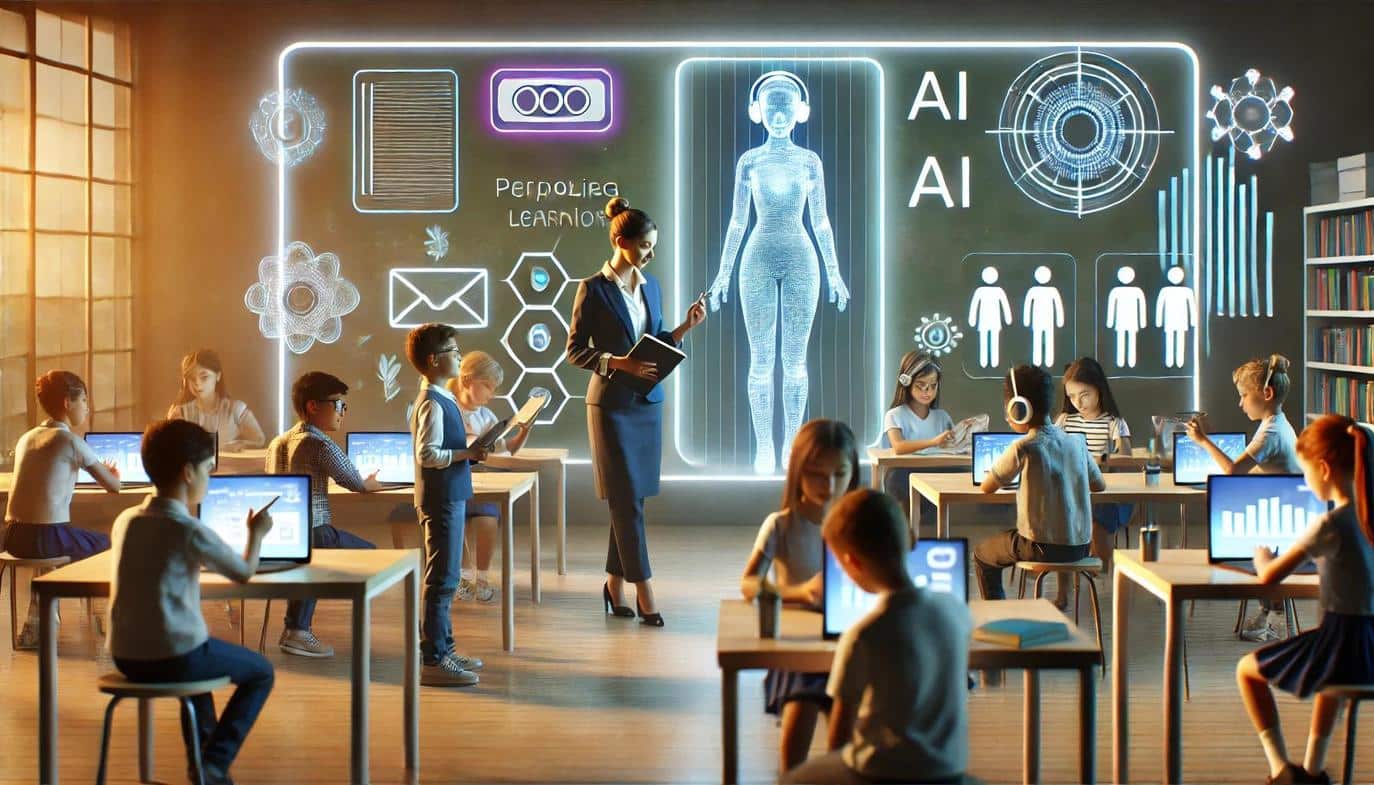What if you could think a command and your computer obeyed instantly? What if memories could be downloaded, skills uploaded, and thoughts shared directly — no keyboard, no voice, just your brain? This isn’t science fiction anymore — it’s the emerging world of Brain-Computer Interfaces (BCIs).
In this deep-dive article, we’ll explore how BCIs work, their current capabilities, ethical considerations, and how they might revolutionize not only medicine but human cognition itself.
Table of Contents
- What is a Brain-Computer Interface (BCI)?
- How BCIs Work: The Science Behind the Tech
- Types of Brain-Computer Interfaces
- Current Applications of BCIs
- BCIs in Medicine: A New Era for Neurotherapy
- BCIs and the Military: Mind-Controlled Machines?
- The Rise of Neuroprosthetics
- BCIs in Everyday Life: The Coming Revolution
- Tech Giants in the BCI Race: Neuralink, Meta & More
- Privacy and Ethical Issues in Brain-Tech
- BCIs and AI: Merging Human and Machine Intelligence
- How BCIs Could Change Human Cognition
- BCIs in Education: Learning at the Speed of Thought
- Can BCIs Help with Mental Illness?
- Brain-to-Brain Communication: Telepathy 2.0?
- Risks and Limitations of BCIs
- Will BCIs Create a Cognitive Elite?
- The Future of BCIs: 2030 and Beyond
- BCIs and Consciousness: Where Do We Draw the Line?
- Final Thoughts: Humanity at the Crossroads
1. What is a Brain-Computer Interface (BCI)?
A Brain-Computer Interface is a system that creates a direct communication pathway between the human brain and an external device. Imagine bypassing your body to control a machine with just your mind — that’s the promise of BCIs.
BCIs record brain signals, interpret them, and translate them into commands that can control digital or physical devices.
2. How BCIs Work: The Science Behind the Tech
At the heart of BCI technology lies neuroscience and signal processing. Here’s a basic overview:
- Electrodes are placed on or inside the brain to detect electrical signals.
- These signals are amplified and processed using algorithms.
- The patterns are interpreted into actionable data or commands.
The key lies in decoding brainwave patterns — electrical impulses generated by neuron activity.
3. Types of Brain-Computer Interfaces
There are three main types of BCIs:
1. Non-invasive BCIs
- Use EEG caps or helmets
- Easy to use but lower resolution and speed
2. Semi-invasive BCIs
- Electrodes placed inside the skull but outside brain tissue
- Better signal quality, moderate risk
3. Invasive BCIs
- Implanted directly into the brain
- High accuracy but higher medical risk
4. Current Applications of BCIs
You might be surprised to know BCIs are already being used today in various domains:
- Restoring motor function in paralyzed individuals
- Helping ALS patients communicate
- Controlling robotic limbs
- Enhancing gaming and VR experiences
5. BCIs in Medicine: A New Era for Neurotherapy
Medical BCIs are perhaps the most advanced and promising use. Examples include:
- Deep Brain Stimulation (DBS): Treats Parkinson’s and depression
- Cochlear implants: Convert sound into electrical signals to restore hearing
- Brain-controlled wheelchairs: Allow paralyzed users to move
This technology could restore sight, speech, and mobility in ways never before possible.
6. BCIs and the Military: Mind-Controlled Machines?
The military is heavily investing in BCI research. DARPA has funded numerous projects to develop:
- Mind-controlled drones
- Enhanced soldier performance systems
- Pain management through neurofeedback
Imagine a battlefield where soldiers control tanks or drones with thoughts — the future of defense is neuro-powered.
7. The Rise of Neuroprosthetics
Neuroprosthetics are artificial devices controlled by brain signals. Popular examples:
- Brain-controlled robotic arms
- Smart prosthetic legs that respond to intention
- Retinal implants restoring partial vision
This blend of man and machine is already transforming lives.
8. BCIs in Everyday Life: The Coming Revolution
We’re moving toward a future where BCIs will be as common as smartphones. Possible uses:
- Typing emails just by thinking
- Controlling smart homes mentally
- Playing video games hands-free
- Enhancing memory or focus with neurostimulation
9. Tech Giants in the BCI Race: Neuralink, Meta & More
Several companies are racing to dominate the BCI market:
- Neuralink (Elon Musk): Developing high-bandwidth brain implants
- Meta (Facebook): Working on non-invasive BCIs for AR/VR
- Kernel: Exploring cognitive enhancement
- Synchron: Creating minimally invasive BCI implants
The tech landscape is shifting toward brain-native computing.
10. Privacy and Ethical Issues in Brain-Tech
With great power comes great responsibility — and risk.
- Who owns your thoughts?
- Can your brain data be hacked?
- Will mental privacy disappear?
These are real concerns. Regulation and ethics must evolve alongside technology.
11. BCIs and AI: Merging Human and Machine Intelligence
Artificial Intelligence will enhance BCI functionality by:
- Improving signal interpretation
- Adapting interfaces in real-time
- Predicting user needs before conscious awareness
Eventually, BCI + AI may lead to a “neuro-singularity”, where minds and machines collaborate in real-time.
12. How BCIs Could Change Human Cognition
BCIs could enhance our cognitive abilities:
- Faster data recall
- Enhanced multitasking
- Instant language translation
- Augmented problem-solving skills
Think of it as a brain upgrade, unlocking superhuman capabilities.
13. BCIs in Education: Learning at the Speed of Thought
Imagine learning calculus or a new language in minutes. BCIs could make that possible.
- Upload knowledge directly
- Monitor student engagement and focus
- Tailor lessons to brain activity
Education will never be the same again.
14. Can BCIs Help with Mental Illness?
Mental disorders like depression, anxiety, and PTSD could be treated using BCIs by:
- Modulating brainwaves
- Providing real-time feedback (neurofeedback)
- Targeting neural circuits with precision
Early trials show promising results.
15. Brain-to-Brain Communication: Telepathy 2.0?
BCIs may make direct mind-to-mind communication a reality:
- Share raw thoughts, emotions, or visual images
- Enable group cognition or collaborative thinking
- Break language barriers completely
This is no longer fantasy — early experiments have already succeeded in transmitting basic information between human brains.
16. Risks and Limitations of BCIs
Of course, challenges remain:
- Invasive procedures carry health risks
- Signal quality in non-invasive BCIs is still limited
- High costs restrict access
- Cognitive overload or side effects from prolonged use
BCIs are powerful, but not without downsides.
17. Will BCIs Create a Cognitive Elite?
Will access to brain-enhancing tech be limited to the rich?
This raises questions about:
- Tech inequality
- Mental performance gaps
- Brain-based social class divisions
Ensuring equitable access is crucial.
18. The Future of BCIs: 2030 and Beyond
By 2030, we may see:
- Brain-controlled operating systems
- Real-time brain search engines
- Virtual experiences directly projected into the mind
- Human-AI hybrids with shared cognition
BCIs could become as vital as the internet, integrated into daily life.
19. BCIs and Consciousness: Where Do We Draw the Line?
As BCIs merge with AI and manipulate neural patterns, we must ask:
- Are we still “ourselves” with enhanced cognition?
- Could BCIs alter identity or personality?
- At what point does machine intervention cross ethical boundaries?
We must tread carefully to preserve human essence.
20. Final Thoughts: Humanity at the Crossroads
Brain-Computer Interfaces aren’t just tools — they’re portals to a new kind of human existence. From healing diseases to expanding minds, BCIs promise a future beyond imagination.
But with that future comes responsibility — to use this power ethically, inclusively, and wisely.
The next decade will determine whether we unlock humanity’s full potential — or lose ourselves in the process.
The question isn’t whether BCIs will change us…
It’s whether we’re ready for how much.
FAQs
1. Are Brain-Computer Interfaces safe?
BCIs are generally safe, but invasive procedures carry surgical risks. Non-invasive versions are safer but less accurate.
2. Can BCIs read your thoughts?
Currently, BCIs can detect intention and some patterns, but not full inner dialogue or personal memories.
3. Will BCIs replace smartphones or computers?
In the future, BCIs could make keyboards, touchscreens, and even voice commands obsolete.
4. Are BCIs only for medical use?
No, BCIs are being developed for gaming, communication, education, and productivity as well.
5. How soon will BCIs become mainstream?
Experts predict wide adoption within 10–15 years, depending on cost, safety, and public trust.
Typing Speed Tester: The Ultimate Guide to Boosting Your Typing Performance



























